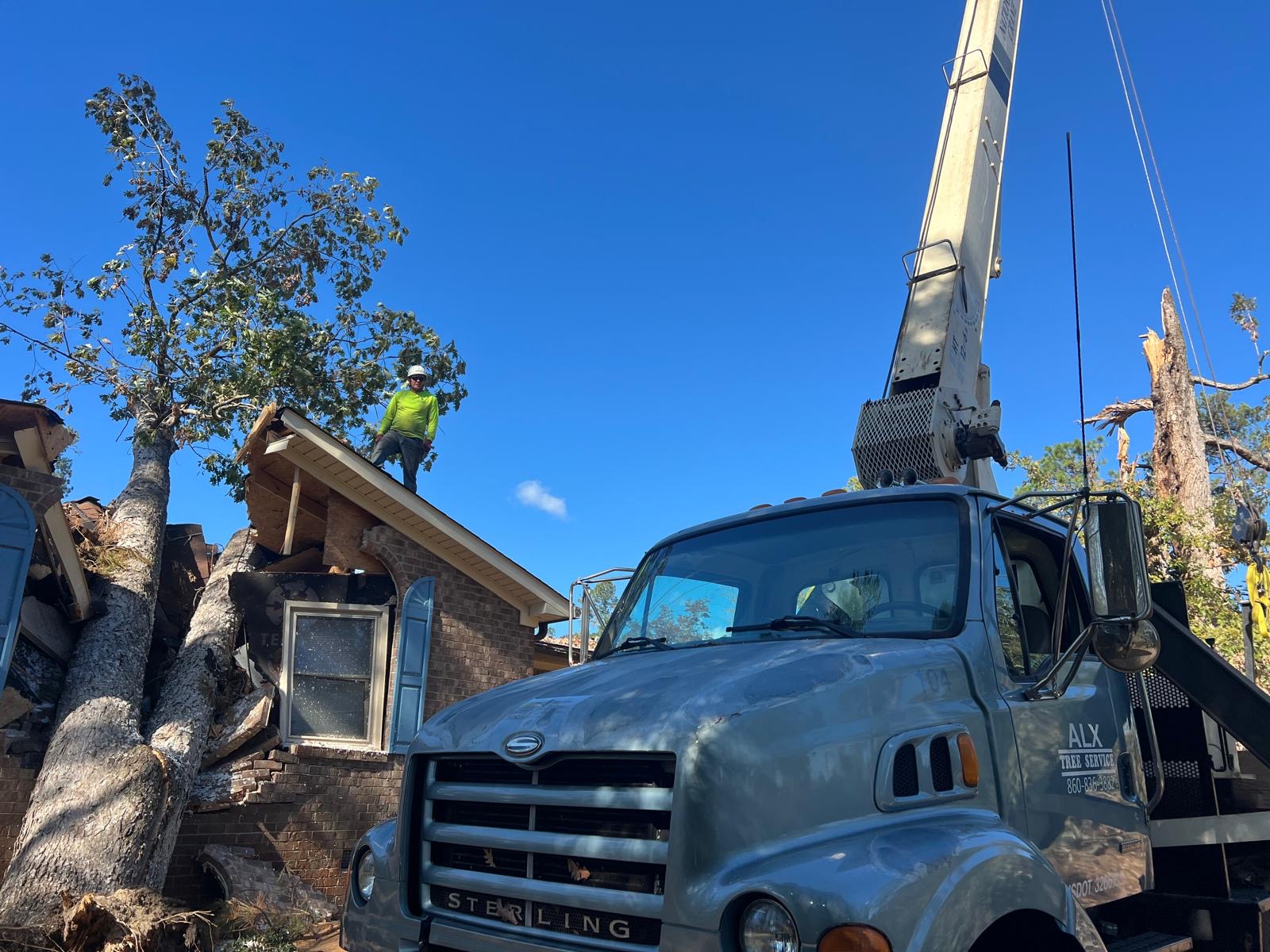How to Prepare Your Property for Storm Season
By Tree Emergency Expert
Tree Emergency Expert

As storm season approaches, safeguarding your property becomes a top priority. Learn how to prepare your home and landscape to minimize damage from severe weather.
Storm season can be challenging for homeowners, with high winds, heavy rain, and potential flooding posing significant risks to property. Proper preparation can help minimize damage and ensure the safety of your home and family. Here's a comprehensive guide on how to prepare your property for storm season.
Your roof serves as your home's primary shield against the elements. Before storm season begins, perform a detailed inspection of your roof. Check for damaged or missing shingles, cracks, and leaks. Address any issues you discover to prevent water from entering your home. Consider hiring a professional to evaluate your roof's condition and perform any needed repairs.
To prevent harm to your roof, siding, and foundation, make sure that your gutters and downspouts are thoroughly cleaned before the storm season begins. Clear out any leaves, twigs, and debris to ensure unobstructed water flow. Also, check for leaks or any damage in your gutters and perform repairs as needed to keep them functioning properly.
Overgrown trees and shrubs can pose as a notable hazard during a storm. Trim any branches that hang over your house, driveway, or power lines.
This will lower the chances of branches snapping off and causing damage. If you have large trees near your home, consider hiring a professional arborist to assess their health and stability.
High winds can turn outdoor items into dangerous projectiles. Secure or store away outdoor furniture, grills, gardening tools, and other loose items. Suppose you have a shed or garage, store items inside. For more oversized items that can't be moved, use straps or anchors to secure them to the ground.
Windows are particularly vulnerable during storms. Installing storm shutters is an excellent way to protect your windows from flying debris. If you don't have storm shutters, consider boarding your windows with plywood. Ensure the plywood is cut to size and ready to install before the storm arrives.
Ensure that your homeowner's insurance policy covers storm damage. Review your policy to understand what is covered and what isn't. Consider adding extra coverage if necessary, especially if you live in an area prone to severe storms. Having adequate insurance coverage can significantly affect your recovery process after a storm.
Assemble an emergency kit with necessary supplies such as water, non-perishable food, flashlights, batteries, a first aid kit, and important documents. Make sure everyone in your household knows the location of the kit and how to access it. Having a generator can also be extremely helpful during a power outage.
In some cases, storms may be severe enough to require evacuation. Develop an evacuation plan for your family and ensure everyone knows the route and destination. Identify a safe place to go, such as a relative's house or a local shelter. Keep your car's gas tank full and have a list of emergency contacts readily available.
Inspect the exterior of your home for any vulnerabilities. Make sure doors and windows are securely sealed, with no gaps or cracks where water could get in. Reinforce your garage door if necessary, as they can be particularly susceptible to storm damage.
In addition to physical preparations, consider backing up important digital data. Store copies of critical documents, photos, and other essential files in a secure, cloud-based service. This ensures that your important information remains safe even if your home is damaged.
Preparing your property for storm season requires thorough planning and proactive measures. Taking these precautions can help safeguard your home and loved ones from the hazards of severe weather. Stay informed about upcoming storms, follow local weather advisories, and prioritize safety. With proper preparation, you can face storm season with confidence and peace of mind.
Share this article:
Related Articles

How Advanced Equipment Speeds Up Emergency Tree Removal
When a tree crashes through your roof or takes out a power line, you don’t have time for delays. You need answers. Fast. And more importantly, you need a crew with the right tools—not just a chainsaw and a pickup. At 1 Tree Emergency, we specialize in high-stakes, high-speed tree removals. What sets us apart? We come equipped. Literally. With advanced equipment like spider lifts, cranes, grapple saws, and remote-controlled rigs, we can tackle dangerous removals faster, cleaner, and without causing more damage to your property.

Is a Leaning Tree an Emergency? Signs It’s About to Fall
A leaning tree can be nothing. Or it can be an imminent, 10,000-pound disaster. And knowing the difference? That can save you thousands of dollars—or your roof.

How Straight-Line Winds in Media, PA Create Hidden Tree Hazards
Straight-line winds aren’t tornadoes. But they pack the same destructive punch. These winds, often part of fast-moving thunderstorms called derechos, blast in one direction—hard and fast. Speeds regularly hit 60 to 100 mph.
Need Emergency Tree Service?
Our team of certified arborists is available 24/7 to handle any tree emergency.